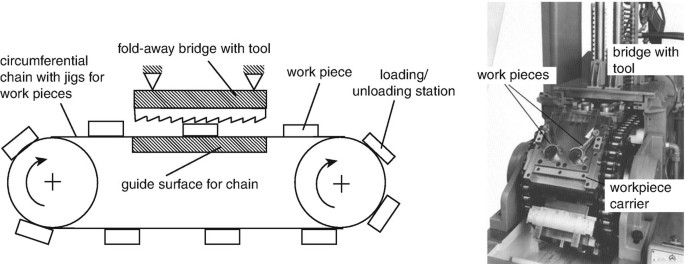If you’re a machinist or in the manufacturing industry, you’ve probably heard of broaching machines and their ability to quickly and accurately produce complex parts. But have you ever heard of continuous-broaching machines?
This type of machine tackles the same tasks as standard broaching machines but with a host of advantages that make them an attractive choice for those looking to increase accuracy and speed while ensuring high product quality.
In this article, we will explore everything there is to know about continuous-broaching machines – from how they work, types available on the market, tips for choosing one, and more! So keep reading if you want to learn more about this versatile tool!

What is continuous broaching?
Continuous broaching is a manufacturing technique used to cut and shape products through teeth that are mechanically set into the metal. It involves the pushing of a cutting tool (called a “broach”) through metal parts in an almost linear motion, rather than with the traditional rotary action employed when drilling or tapping.
This type of machining offers several advantages: it produces high-quality surfaces, removes less material than other techniques, and can generate curves and tapers with precision.
In addition, multiple operations can be conducted simultaneously, such as cutting shapes for fasteners or grooves for O-rings. Continuous broaching can thus help businesses speed up production times while also forming complex pieces from hard materials more precisely and cost-effectively.
Continuous broaching machines: How do they work?
Continuous broaching machines are specialized machines that use a tool known as a broach to cut or shape the surface of materials. This process involves using several teeth to remove material from the surface in one continuous operation and is suitable for larger objects that require a precise, smooth finish.
The broaching machine works by taking the required amount of force from a hydraulic or mechanical press. The broach then moves gradually along multiple guide rails, essentially pushing through the workpiece with as many teeth as necessary for the desired result. Depending on the size of the broaching machine and its environment, it can often be automated to increase output, accuracy, and precision.
Machines available on the market
There are many types of continuous broaching machines available on the market that provide effective and efficient metalworking solutions. From the high-powered horizontal machines, ideal for mass production cutting through dense materials, to the lighter and more agile vertical units designed for smaller operations, manufacturers have access to a great variety of options that can meet a range of needs.
In addition to these traditional models, there are also custom machines, which can be designed and built according to specific requirements. All of these machines bring with them a range of advantages from increased productivity and quality output to reduced labor costs, making them a popular choice for industrial operations in need of reliable metalworking solutions.
Tips for choosing continuous broaching machines
The choice of a continuous broaching machine is often the difference between an efficient operation and an inefficient one. When choosing a machine, there are several key points to keep in mind. Consider the size and type of workpiece the machine will be used to broach; make sure that it is suitable for your application before purchasing.
Another important factor to consider is how durable the machine is likely to be; machines made from materials that are resistant to wear and tear tend to last longer than cheaper alternatives.
Additionally, be sure to look into how easy it is to access support in case something goes wrong, as well as any additional features that might streamline the broaching process. Taking all of these items into account will ensure that you select a continuous broaching machine that best meets your needs and delivers excellent performance for many years.
Read more about Technical Topics for Mechanical Engineering